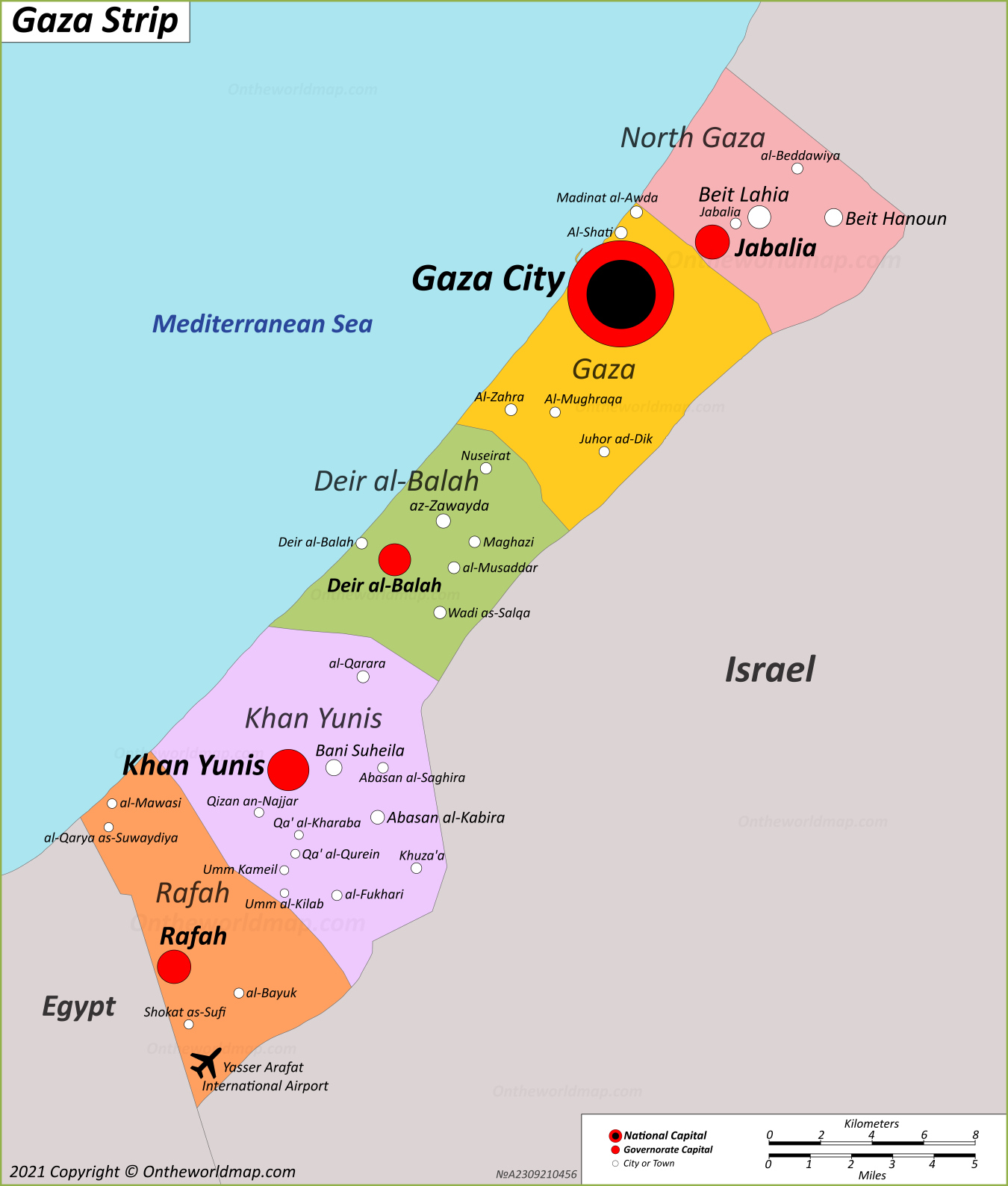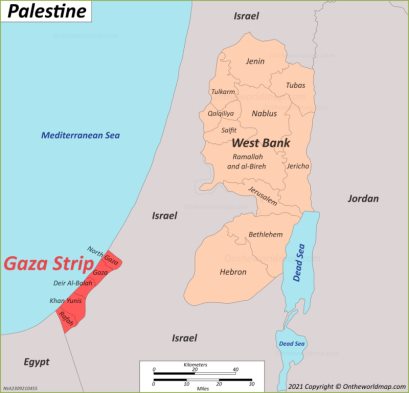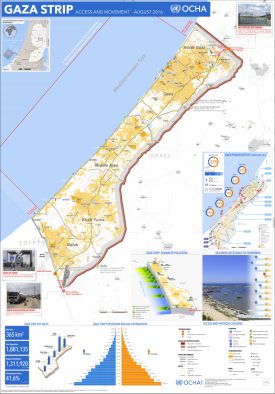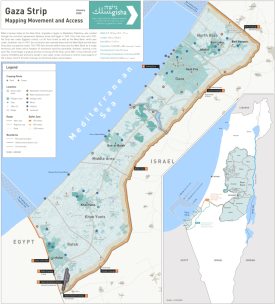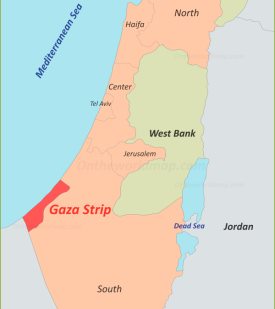Gaza Strip Map
Description:
You may download, print or use the above map for educational, personal and non-commercial purposes. Attribution is required. For any website, blog, scientific research or e-book, you must place a hyperlink (to this page) with an attribution next to the image used.
Online Map of Gaza Strip
About Gaza Strip
Gaza Strip constitutes a Palestinian territory spanning 365 square kilometers (141 sq mi) along the eastern Mediterranean coast, bordered by Israel to the north and east, Egypt to the southwest, and the Mediterranean Sea to the west. This densely populated region houses approximately 2.1 million inhabitants, making it one of the most crowded areas globally.
The territory's geography consists primarily of flat or rolling plains, with sand dunes near the Mediterranean coastline. The climate reflects typical Mediterranean patterns, characterized by hot summers and mild winters. Gaza possesses limited natural resources, with agricultural land and coastal fishing waters representing its primary natural assets.
Historical control of Gaza has shifted through various powers. Egypt administered the territory from 1948 to 1967, followed by Israeli occupation until 2005. Hamas, an Islamic militant group, took control in 2007 after winning Palestinian legislative elections and subsequent conflicts with Fatah. The territory remains under strict Israeli and Egyptian blockade, significantly impacting its economy and development.
Gaza's economy faces severe challenges due to movement restrictions, limited access to markets, and recurring conflicts. The territory relies heavily on international aid, with unemployment rates consistently ranking among the world's highest. The main economic activities include small-scale agriculture, fishing (within restricted maritime zones), and basic services.
Infrastructure in Gaza struggles to meet population needs. The territory experiences chronic shortages of electricity, with most areas receiving only a few hours of power daily. Water quality presents another critical issue, as over 95% of Gaza's aquifer water proves unsuitable for human consumption due to contamination and seawater intrusion. Healthcare facilities operate under significant constraints, often lacking essential medical supplies and equipment.
Educational institutions in Gaza include several universities and numerous schools, though these facilities frequently face operational challenges due to resource limitations and periodic conflicts. Despite these obstacles, literacy rates remain relatively high, exceeding 96% of the adult population.
On October 7, 2023, Hamas's Al-Qassam Brigades invaded southwest Israel, killing 1,300 people and taking 236 hostages. Israel declared war on Hamas on October 9 and imposed a total blockade of Gaza Strip. By January 2024, according to the Gaza Health Ministry, over 43,000 Palestinians, including 16,000 children, were killed. Approximately 1.9 million Palestinians (85% of Gaza's population) were internally displaced, and 70-80% of buildings in northern Gaza were damaged or destroyed.
The Facts:Capital: Gaza City.
Area: 141 sq mi (365 sq km).
Population: ~ 2,141,643 (2024 estimate).
Official language: Arabic.
Currency: Israeli new shekel.
Largest cities: Gaza City, Khan Yunis, Jabalia, Rafah, Beit Lahia, Deir al-Balah, Beit Hanoun, Bani Suheila, Abasan al-Kabira, az-Zawayda.
Governorates of Gaza Strip: North Gaza, Gaza, Deir al-Balah, Khan Yunis, Rafah.
Maps of Palestine
Cities of Palestine
Maps of Israel
Cities of Israel

